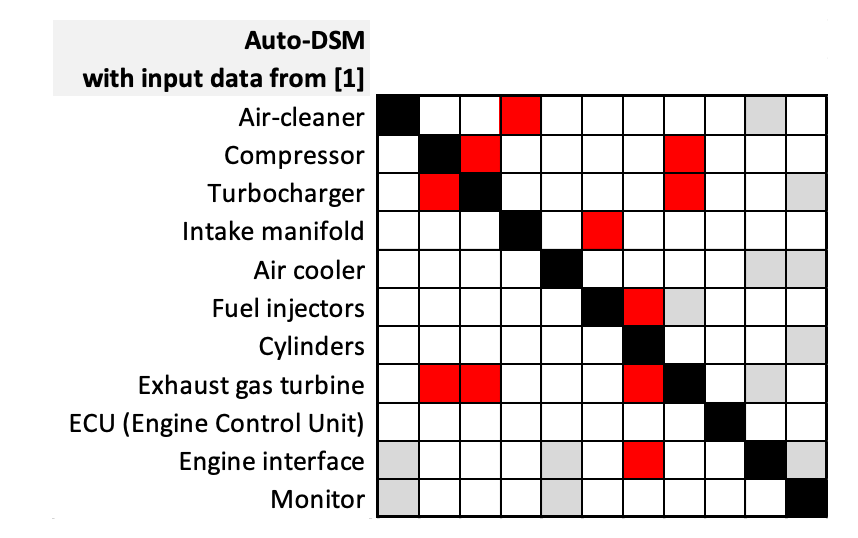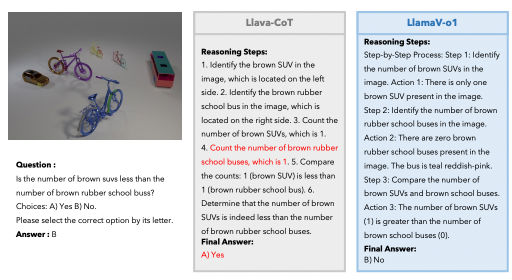Using an LLM to automatically create a DSM for engineering project management
DSMs are crucial in engineering for mapping complex system interactions but are a pain to create. Until now.

You could probably guess this, but the landscape of engineering design is witnessing a transformative phase with the integration of artificial intelligence.
One area impacted by this transformation is the Design Structure Matrix (DSM), a tool traditionally used to map the complex interactions in engineering systems. Creating a DSM, however, has historically been a labor-intensive process, requiring meticulous manual effort and extensive expertise. In this post, I'll look at a new preprint that introduces a groundbreaking approach called Auto-DSM. It leverages the capabilities of an LLM to automate the creation of DSMs.

By automating the DSM generation process, Auto-DSM promises to reduce human error, save time, and potentially uncover insights that manual methods might miss. The significance of this development lies in its potential to reshape the methodologies of system design, making them more accessible, accurate, and efficient.
Subscribe or follow me on Twitter for more content like this!
The Role of DSM in Engineering
What is DSM?
The Design Structure Matrix (DSM) is a versatile tool in engineering, primarily used to represent complex systems. It's a matrix-based method that allows engineers to visualize and manage the interrelationships and dependencies between components within a system. DSMs are widely used across various sectors, including automotive, aerospace, and electronics, for tasks like product development, project management, and organizational design.
Traditional DSM Generation: Challenges and Significance
Traditionally, generating a DSM is a manual and meticulous process. Engineers collect data, analyze relationships between system components, and then represent these relationships in a matrix format. This manual approach, while thorough, is time-consuming and prone to human error. The accuracy and effectiveness of a DSM heavily rely on the engineer's expertise and the quality of data collected. In complex projects, where hundreds or even thousands of components interact, the manual generation of DSMs becomes increasingly challenging and resource-intensive.
Why Improve DSM Generation?
Improving the DSM generation process is crucial for several reasons. Firstly, it can significantly enhance the efficiency of the design process, allowing for quicker iterations and decision-making. Secondly, automating DSM generation can reduce the likelihood of human error, leading to more accurate and reliable matrices. Lastly, in an era where systems are becoming increasingly complex, having a tool that can swiftly adapt and update DSMs is invaluable for engineers and project managers.
Auto-DSM: Integrating AI into DSM Generation
The development of Auto-DSM marks a significant advancement in engineering design tools. Utilizing a Large Language Model (LLM), Auto-DSM automates the process of DSM generation, which traditionally required extensive manual effort. This innovation leverages the power of AI to analyze and interpret complex datasets, extracting relevant information to construct the DSM.
How Auto-DSM Works

Auto-DSM operates by processing large volumes of data, including text and specifications related to engineering projects. The LLM sifts through this data, identifying and mapping the interactions and dependencies between various components of a system. This process not only speeds up the generation of DSMs but also aims to reduce errors that are common in manual methods.
Case Study and Results
In a practical experiment (outlined in the original paper), the Auto-DSM was employed to generate a DSM for a diesel engine project. The model succeeded in reproducing 77.3% of an existing, manually created DSM for the same engine, demonstrating its potential effectiveness. This result is a significant indicator of how AI can aid in accurately modeling complex engineering systems.
The paper evaluated the performance of Auto-DSM using two main metrics: correctness and completeness. These metrics were applied to different sets of input data, highlighting the model's varying performance based on data quality. This evaluation underscores the importance of robust and comprehensive data in achieving accurate DSM generation using AI.
Limitations and Considerations of Auto-DSM
Data Dependency
The Auto-DSM's performance heavily relies on the quality of the input data. The accuracy of the generated DSM is contingent upon the comprehensiveness and relevance of the data fed into the model. Incomplete or low-quality data can significantly impair the model's ability to generate an accurate DSM.
Comparative Analysis
A notable limitation of the study is the absence of a detailed comparative analysis between Auto-DSM and traditional manual methods. This gap makes it challenging to fully understand the efficiency and accuracy improvements offered by Auto-DSM.
Conclusion
While Auto-DSM demonstrates potential, it's an emerging technology. Its current application is limited, and I think further development is required. There are challenges in integrating this AI-driven approach into existing workflows, and its adaptability to various engineering projects remains to be fully explored.
While demonstrating promising results, particularly in the case study, data quality plays a huge role in making these sorts of systems work. The lack of comprehensive comparative analysis with traditional methods leaves something to be desired too I think.
My verdict? Auto-DSM represents a potential shift towards more efficient, data-driven engineering processes, albeit with current limitations and challenges that need addressing in future advancements.
Subscribe or follow me on Twitter for more content like this!




Comments ()